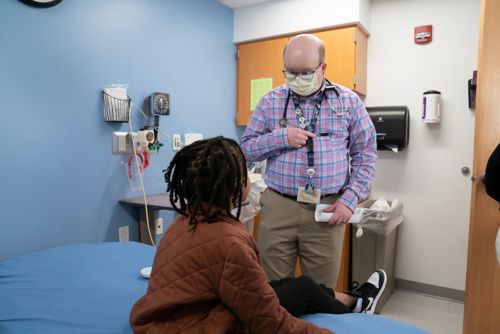There are many types of blood disorders. A blood disorder can affect one or more parts of the blood including red blood cells, white blood cells, platelets, and plasma. This can cause different symptoms and health problems depending on the blood cells that are affected.
Find information on types of blood disorders.
How are blood disorders diagnosed?
The first step of diagnosing a blood disorder is a physical exam and medical history. Your health care provider will ask about your child’s symptoms, recent illnesses, and any medicines your child takes. They may also ask about any family history of blood disorders.
Tests to diagnose blood disorders
Lab tests for blood disorders may include:
- Complete blood count (CBC) to measure many features of the blood and get an overall picture of health
- Blood smear to look at the size and shape of blood cells under a microscope
- Reticulocyte count to measure the number of young red blood cells in your child’s body
- Tests to measure iron, vitamins (Vitamin B12 and Folic acid), and other blood components
- Hemoglobin test to detect abnormal types of hemoglobin
- Tests to measure how blood clots
- Tests to measure kidney and liver function
- Bone marrow aspiration and biopsy to look at the number and size of cells found in a bone marrow sample
- Genetic testing to check for inherited disorders or gene changes
Imaging tests for blood disorders may include ultrasound (sonogram) to examine the spleen.
When choosing diagnostic tests, the care team considers:
- The type of blood disorder they think your child might have
- Your child’s symptoms
- Your child’s age and health history
- Results of previous medical tests
- Family history of blood disorders
Using test results to plan treatments
If test results suggest a blood disorder, your health care provider will likely refer you to a hematologist for more tests to diagnose the specific type of blood disorder. A hematologist is a doctor who specializes in diagnosing and treating blood disorders.
Members of the care team will discuss the test results with you and options for treatment. The treatment plan for blood disorders depends on the type of blood disorder and the severity of the condition.
Tips for families facing a blood disorder diagnosis
It is normal to feel scared or overwhelmed when your child is diagnosed with a blood disorder. Here are some tips that can help you cope with a new diagnosis:
- Communicate openly with your care team. Ask questions and share your concerns.
- Keep a notebook with you during appointments. Write down your questions and important information so you don’t forget.
- Ask how and when you will get your child’s test results.
- Know what your child’s lab values mean.
- Seek support from your care team and from other families who have been through a similar experience.
Questions to ask the care team




